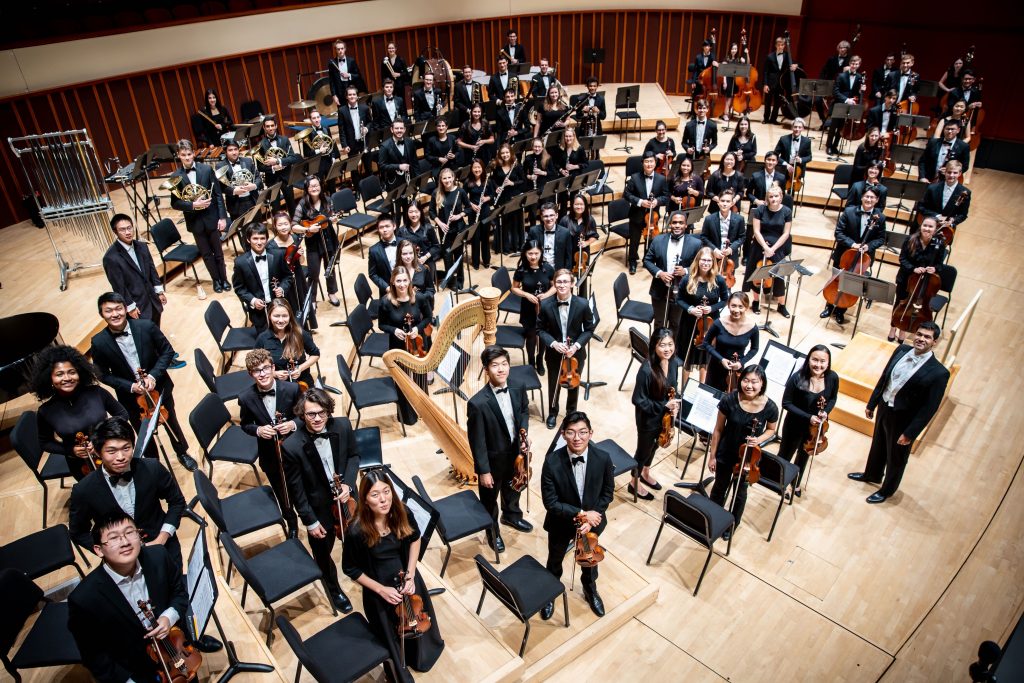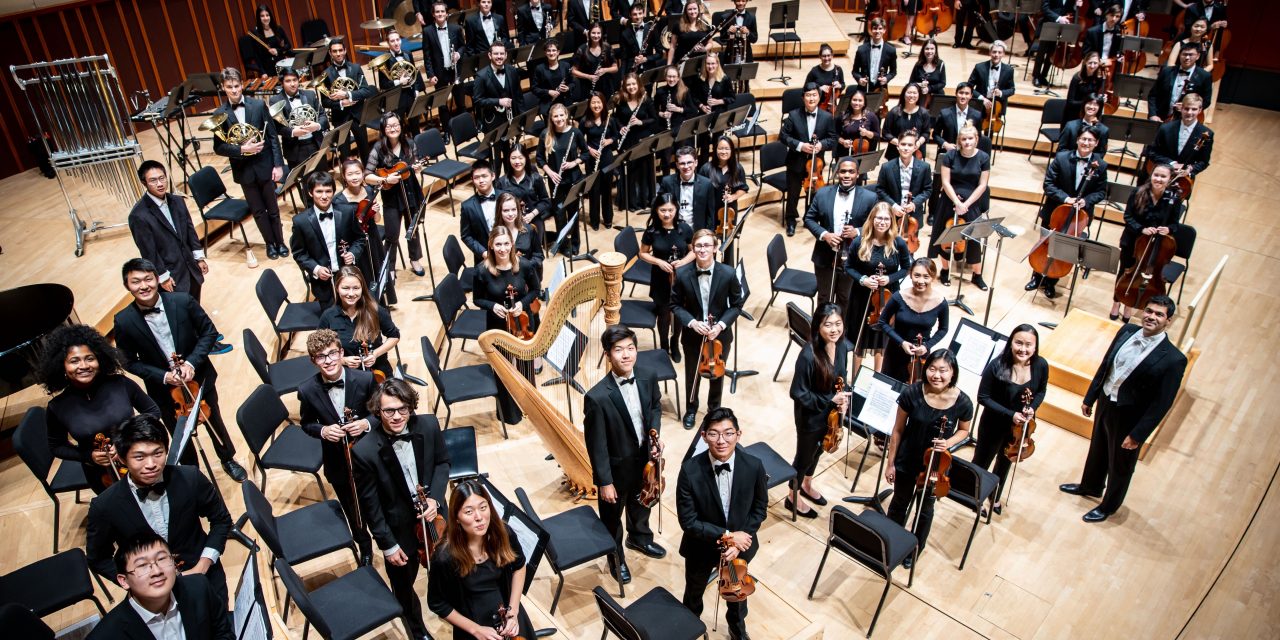At the Emory University Symphony Orchestra’s (EUSO) concerto competition concert Mar. 3, an anticipatory air hung over the stage as the audience crowded into the relatively packed hall. The performance was years in the making, and several student spectators let out excited hoots and hollers as their friends took to the stage.
Before the concert began, EUSO conductor and director of orchestral studies Paul Bhasin took to the stage to explain the concert’s unusual circumstances. Not only did COVID-19 cancellations force the orchestra to feature winners from both 2020 and 2021, but the online start to the semester meant they only had half the usual time to prepare.
Despite these challenges, the student musicians’ impressive chops were on display from the first note of the concert’s opening piece, Joaquin Turina’s “La Procesion del Rocio.” The composition celebrates a festival in Spain and is often used to demonstrate the range of musical textures in an orchestra. The piece features everything from fast and dynamic sections to comparatively slow and melodic ones.
EUSO was able to take advantage of this opportunity spectacularly, showcasing soft strings, booming brass and everything in between. The famous flute solo from the second movement deserves special recognition for its gentle but firm notes that were almost palpable as they danced through the air.

Courtesy of Trevor Chun.
Still, the premier piece was not without its faults. A few times, one section of the ensemble would race past another, with the orchestra wobbling to regain a balanced tempo. However, these mistakes were understandable considering the short time the orchestra had to prepare, and the redeeming qualities of the performance more than made up for them.
An especially impressive aspect of “La Procesion” was the orchestra’s ability to generate commanding silences that hung over the auditorium. So stunning were these pauses that when the piece reached its conclusion, the audience momentarily forgot to clap. A sidelong glance from conductor Bhasin jolted the hall back to life, leading the audience into thundering applause and eventually a standing ovation. The silence came from adoration, not disapproval.
The concert then transitioned to performances from the three concerto competition winners from 2020 and 2021: Caleb Park (23C) on cello, Kaito Mimura (23C) on violin and Jason Lin (22C) on piano. Displaying a depth of styles, each musician was able to convey a unique set of strengths to the audience.
Park has an impressive resume for a young musician, including experience soloing with the Columbia Youth Symphony Orchestra and the Peabody Youth Orchestra, as well as performing at the Verbier Music Festival in Switzerland.
This performance was not Park’s first time performing his chosen piece, Pyotr Ilyich Tchaikovsky’s “Variations on a Rococo Theme,.” as he had played it previously with the Concert Artists of Baltimore Chamber Orchestra in 2016. Perhaps for this reason, Park’s performance displayed an awesome level of dexterity. The measured flurries of notes were complemented by his dark tone in the lower ranges, mixing excellently with the accompanying orchestra. The audience’s ferocious cheering after he had finished made it clear they were impressed.
Next up was Mimura, performing the first movement of Johannes Brahms’ “Violin Concerto in D Major.” While still impressive, this movement is the least technically intense of the three that make up the symphony. Instead, “Violin Concerto in D Major” focuses on introducing the themes of the work and gives the performer the ability to interpret music of rich emotional character.
Mimura used the concerto to demonstrate his expressive talent and perfectly captured the rich drama of Brahms’ themes as he chased them up and down his violin. The double stops in the second half of the movement were especially saturated and attention-grabbing.
In what proved to be the most impressive performance of the night, Lin concluded with his rendition of the first movement of Tchaikovsky’s “Piano Concerto No. 1 in B-flat Minor.”
Likely for similar reasons as the tempo problems in “La Procesion,” the hand-off between the domineering orchestral melody and the roaring piano theme at the beginning of the work did not transition smoothly. Coordination mishaps reared their head a few other times, such as during the interplay between the piano and flute about halfway through the piece.
These problems were relatively minor, however. Any memory of them quickly faded as Lin sent bar after bar of the emotionally charged and technically impressive concerto careening off the stage and to the audience. While Lin successfully conveyed the popular themes throughout the work, he excelled the most at the fast and tender motifs near the movement’s end. The piece also allowed the orchestra to revisit some of the impressive colors from the beginning of the night.
With the musicians’ last notes still hanging in the air, the crowd erupted into ecstatic applause, and it seemed like there wasn’t a single person in that hall left sitting. Though Park, Mimura and Lin were the winners of their concerto competitions, there is no doubt that the true winners were the audience members.
You can catch the Emory Symphony Orchestra at their next concerts on April 22 and 23, where they will be performing Mozart’s Requiem, a commissioned work by Brittany Green, and Mahler’s Totenfeier.
Sam Shafiro (he/him) (25C) is a Political Science major from Oak Park, Illinois. He is involved with the Emory Barkley Forum for Debate, Deliberation, and Dialogue and the Emory SIRE undergraduate research program. In his free time, Sam enjoys bananas and celery, as well as other fruits and vegetables.






